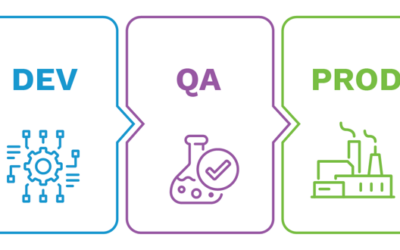Times Are Changing (for Enterprise Software)
For anyone focused on solving business problems using software, times are changing. Three broad trends are converging to smash the old build-versus-buy par
For anyone focused on solving business problems using software, times are changing. Three broad trends are converging to smash the old build-versus-buy paradigm.
Until recently, organizations seeking to improve business processes through technology had essentially two options.
The first was to buy prepackaged “off the shelf” software from enterprise vendors. While these solutions delivered the promised functionality, they almost never worked quite the way companies actually performed their processes.
So, businesses would rip apart the software and create customizations. Those would work fine until the vendor released a new version of the software. Then the customizations would “break” and the companies would have to repair or re-create them. Then they’d work fine until the next new version was released, and…the endless cycle would repeat.
The second was to develop custom software from the ground up. These solutions worked exactly the way the company wanted them to. But they were expensive and time-consuming to develop, required hiring specialized skills, and became nearly impossible to maintain over time.
Today, those are no longer the only options, due to three key trends.
Low-Code / No-Code Platforms Enable “Citizen Developers”
In the old world of custom software development, business users would describe their requirements to a business analyst, who would turn those requirements into specifications for software developers, who would then write the code. Sometimes this worked (sort of), and sometimes it turned out more like the telephone game.
No longer. With today’s low-code platforms, the business process experts themselves can use an intuitive, drag-and-drop interface to build their own workflow automations with little or no help from the IT department. It’s much faster, easier, doesn’t require specialized software engineering skills, and the user gets exactly what they want.
All business applications are the same in the sense that they are created using a common set of components or “building blocks” (forms, portals, rules, approvals, etc.) with fundamental attributes (e.g., security, scalability, auditability) built in. In the custom development days, programmers had to manually re-create all of those elements. Today, low-code platforms incorporate all of that essential technology “plumbing.”
Forrester analyst Charles Betz has made this point as well, in discussing the demand from enterprises for collaboration platforms. In combining these pre-built components with low-code tools, “software development—whether no-code, low-code, or pro-code—should no longer be reserved for the IT team.”
Betz says he’s seeing convergence across low-code systems and collaborative work management which Forrester refers to as Enterprise Service Management (ESM) and Platforms-as-a-Service (PaaS).
We’re Accustomed to Specialized Apps
For years, enterprises have invested huge sums of money (not to mention implementation time) into massive one-system-does-it-all software suites: ERP suites, HR management suites, ITSM software suites, and so on.
People don’t work that way today. We all have mobile phones, and our phones run on specialized apps: an app for driving directions, another for messaging, one for taking notes, (at least) one for online banking, one for each of our social networks…
It’s unimaginable that any vendor would try to develop a single app “suite” that would do all of those things—or that anyone would use such a thing if they did.
The enterprise software world is moving in the same direction. Using low-code tools, business users can create their own apps for processing invoices, scheduling an IT service conversation, onboarding a new employee, or any business process.
Rapid Application Development is Already Happening
When the COVID-19 pandemic hit and businesses sent their people home to work remotely, normal business processes were suddenly upended.
Virtually overnight, companies had to rewrite their asset management systems to handle 5,000 locations instead of five. They had to change how employees ordered and received equipment, supplies, and services. They had to re-engineer processes, and the technology supporting them, for bringing on new employees and promoting or transferring current workers.
And for the most part, companies did it. They didn’t change out their big back-end systems, but used low-code platforms to connect with their APIs and build out new front-end interfaces and processes.
So this isn’t a pie-in-the-sky, someday idea. It’s actually happening.
Poof, the times have changed. With the right platform, you can whip out applications that are secure, scalable, flexible—all those attributes that are critically important—composed out of forms, chat, search, and the other standard building blocks of enterprise apps.



